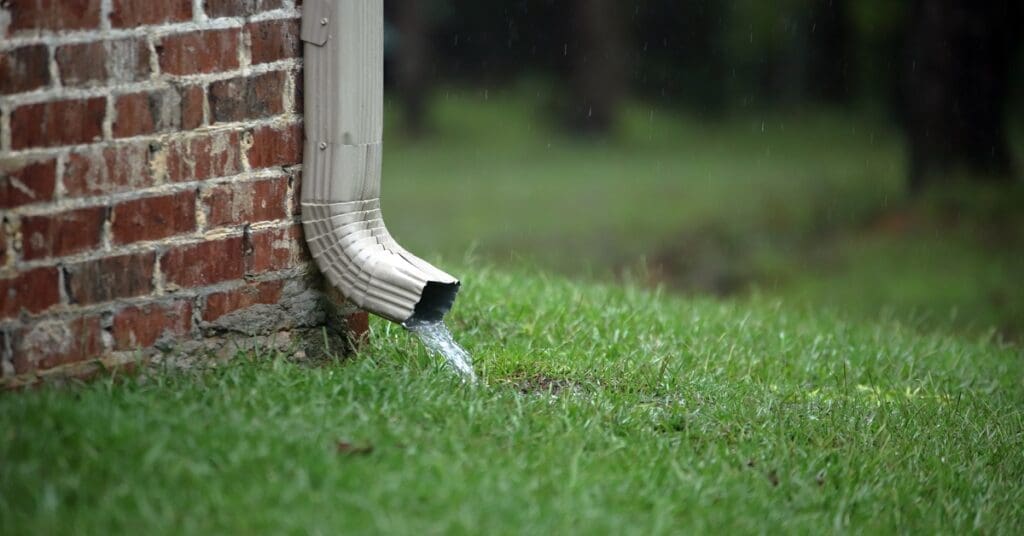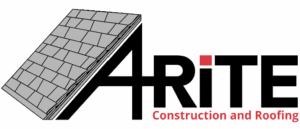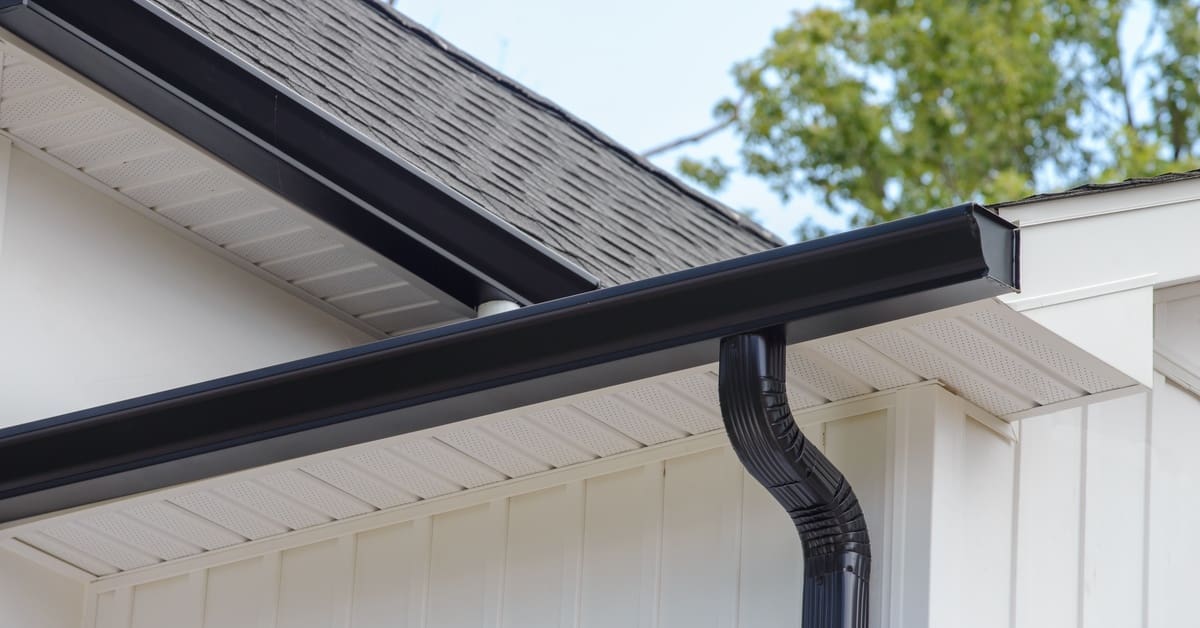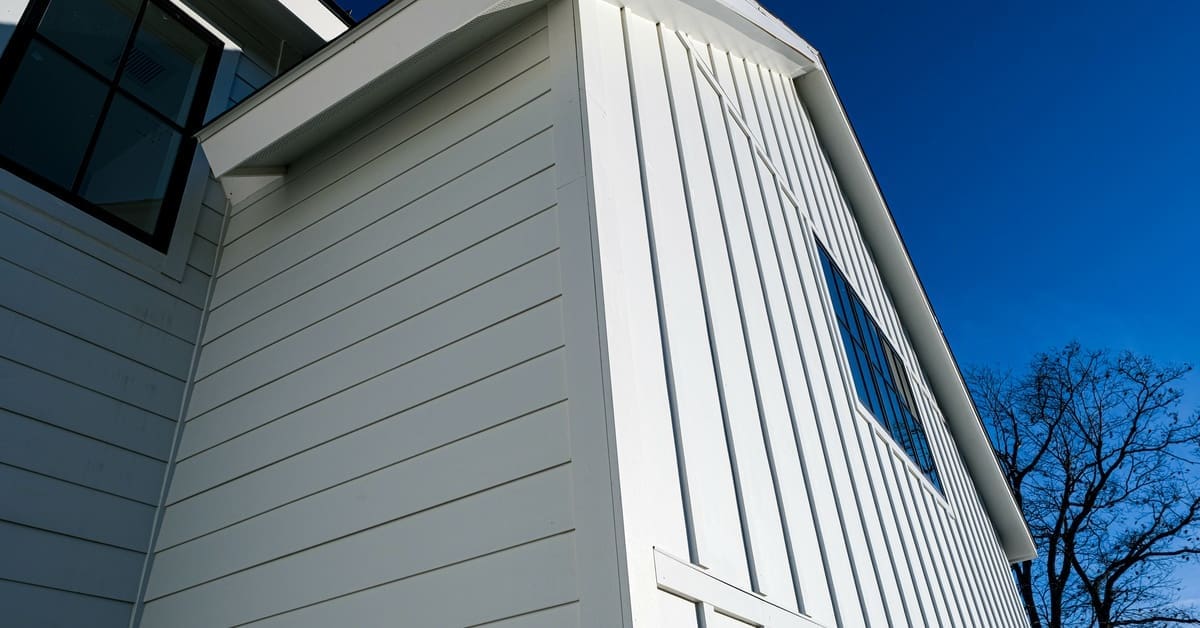Protecting your home from water damage begins with an effective gutter system. While gutters collect and channel rainwater, downspouts direct water away from your foundation. Choosing the right downspout size might seem like a small detail, but it plays a big role in preventing problems like flooding, erosion, and structural damage. Let’s explore the knowledge needed to choose the right gutter downspout size for your home.
Why Gutter Systems Matter
As mentioned, gutters catch rainwater from your roof, and downspouts move that water to the ground and away from your home. When properly sized and installed, this system prevents basement flooding, soil erosion, and siding damage. Components of a gutter system include gutters, downspouts, and accessories, such as hangers, splash blocks, and extensions that direct water away efficiently.
Key Factors That Influence Downspout Size
Several factors help you determine the right downspout size for your home. Ignoring even one can lead to issues like water overflow, clogs, or damage to your foundation, so review the following information carefully.
Roof Size and Pitch
The bigger or steeper your roof, the more rainwater it collects and the faster it flows. Larger or steeper roofs need bigger downspouts to handle the extra volume and speed. For example, homes with large roof areas often need three-inch-by-four-inch downspouts instead of the more common two-inch-by-three-inch size.
Rainfall Intensity in Your Area
Rainfall levels vary by region. In areas with heavy or fast-falling rain, like Central Wisconsin, downspouts must handle more water in a short time. Contractors use local weather data (available from the National Weather Service) to determine how intense the rain is in your area and size your system accordingly.
Gutter Size and Compatibility
Downspouts should match the gutters they’re connected to. A five-inch gutter usually pairs with a two-inch-by-three-inch downspout, while a six-inch gutter works better with a three-inch-by-four-inch downspout. Using mismatched sizes can lead to overflows or clogs. If your system includes specialty styles like half-round or K-style gutters, be sure to account for the matching downspout sizes as well.
How To Calculate Downspout Size

Fortunately, calculating the appropriate downspout size for your home is straightforward. Here’s how professional gutter installation in Wausau, WI, typically goes when it comes to sizing downspouts:
1. Measure the Roof Drainage Area
Professionals measure the square footage of each roof section that drains into the gutters. For simple shapes, they multiply the length by the width; for more complex roofs, they measure in sections and add the totals together.
2. Adjust for Roof Pitch
Steeper roofs collect more water, so contractors apply a pitch factor to adjust the drainage area. For example, a moderately pitched roof has a factor of 1.1, while a steep roof might have a factor of 1.3.
3. Factor in Rainfall Intensity
Using local rainfall data, contractors calculate how much water the roof sheds during a downpour. This information determines how many downspouts—and what size—are needed to handle the flow.
4. Match to Downspout Capacity
Based on the total volume, contractors select the correct downspout size that can efficiently manage the water without overflowing.
Material and Style Choices for Downspouts
Selecting the right material and style for your downspouts is as important as choosing the correct size. Different materials offer certain benefits, such as durability, aesthetic appeal, or cost-effectiveness, and the right choice depends on your priorities.
Aluminum is commonly chosen for its manageable weight, rust resistance, and cost-effectiveness. It pairs well with most gutter and siding styles. However, if you’re aiming for a more upscale look, copper has long-lasting durability and a distinct, upscale appearance that develops a natural patina over time (though it tends to be more expensive). For areas with heavy rain or snow like Wausau, WI, galvanized steel is a strong, dependable choice, though it may need more maintenance to protect against rust.
Beyond material, the style of your downspouts influences its function and appearance. Round downspouts are often chosen for traditional homes with half-round gutters, while rectangular downspouts complement more modern setups. The right combination of material and style ensures optimal performance and curb appeal.
How Contractors Install Downspouts

Even with the right size, improper downspout installation can reduce its effectiveness. To maximize performance, contractors carefully slope downspouts downward to encourage proper water flow. They use brackets or straps to securely attach the downspouts to the walls for stability during storms.
Contractors also position downspouts to direct water away from the home’s foundation and may install extensions or underground drainage systems for better diversion. For complex installations, especially in multistory properties, professionals bring their expertise to confirm that everything is installed correctly and efficiently.
Common Downspout Problems and Their Solutions
Choosing the right size and material for your downspouts is important, but downspouts can still encounter issues. Frequent problems like clogging from leaves or debris can be avoided through regular cleaning or by installing gutter guards to keep larger debris out.
Leaks are another concern, frequently caused by improper sealing or damage, but they can be fixed with waterproof sealant and regular connection checks. Pooling water near the foundation happens when downspouts aren’t directed properly away from your home, and this can usually be resolved by adding extensions or splash blocks.
Ongoing maintenance is imperative for prolonging the lifespan of your gutter system. Cleaning your gutters and downspouts twice annually prevents debris from accumulating and causing clogs. Installing gutter guards reduces cleaning frequency, while regularly inspecting your downspouts for wear, rust, or damage helps catch small issues before they become bigger concerns.
Properly Sized Downspouts Protect Your Home
Choosing the right gutter downspout size for your home is simple yet crucial. When paired correctly with your roof size, pitch, and regional rainfall, downspouts safeguard against flooding, erosion, and structural damage.
If you’re looking for expert help with gutters and downspouts in Wausau, WI, trust our experienced team here at A-Rite Construction and Roofing. Our professionals handle every part of the process, from sizing and selection to precise installation so your home stays dry and protected year-round. Contact us today for a consultation!




